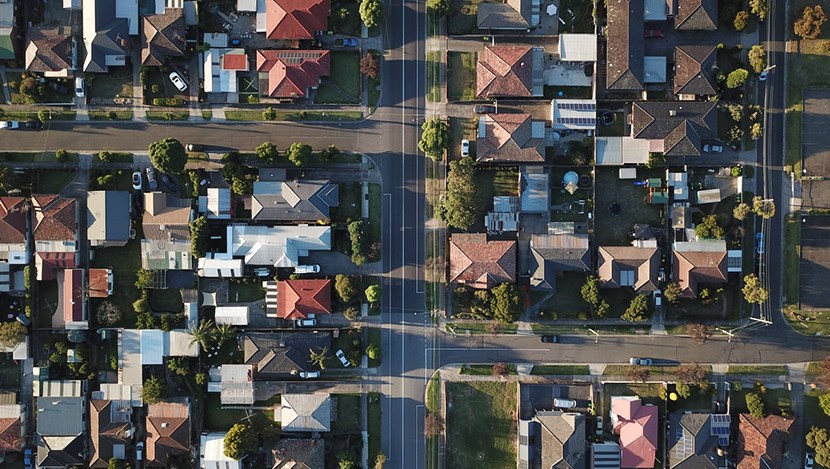
Low Rates Offer More Affordability, But Higher Prices Cancel Out

Historically low rates are increasing home buyers’ purchasing power, but low inventories and rising home prices are effectively canceling out that purchase power, said Redfin, Seattle.
Redfin reported a homebuyer with a $2,500 monthly housing budget can afford a home priced $33,250 higher than a year ago, thanks to historically low mortgage rates. At a 3% mortgage interest rate—roughly the average 30-year fixed rate for July and August—a homebuyer can afford a $516,500 home on $2,500 per month, up from the $483,250 they could afford on the same budget when the average was 3.77% in July 2019. The $33,250 rise in purchasing power from last year (from $483,250 to $516,500) represents a 6.9% increase.
However, the 8.2% year-over-year home-price increase in July, the largest rise in more than two years, largely negated that purchasing power.
“Low mortgage rates are motivating many people to purchase a home, particularly those who want more space to work from home,” said Redfin chief economist Daryl Fairweather. “But because there hasn’t been an increase in the number of homes for sale since rates started dropping with the onset of the pandemic, many buyers end up competing for the same homes, driving up prices. Those competing forces make the current market a wash for many buyers looking for single-family homes in competitive areas. Buyers searching for condos can find a better deal, both on overall price and mortgage payments, because most condos are less competitive than single-family homes as people move out of densely populated urban areas.”
The continuing housing supply shortage means there are fewer affordable homes for sale for someone with a $2,500 monthly budget than last year. Redfin said in July, 70.6% of homes nationwide were affordable on that budget, down slightly from 71.9% a year ago.
“Back in June, homebuyers thought they could take advantage of low rates and get a good deal because of the pandemic, said Redfin agent Lisa Bernardeau. “Now they’re seeing that’s not the case because inventory is so tight and there’s so much competition, but most buyers are still powering through. Regardless of high prices, a lot of buyers have been watching the market and they don’t want to miss out on historically low rates or risk prices going even higher. Low interest rates are the number one driver right now.”
The report can be accessed at https://www.redfin.com/blog/low-mortgage-rates-increase-purchasing-power/.
In a separate report, Redfin said the number of homes for sale dropped for the 12th straight month in July, plummeting nearly 20% to just 1.9 million homes—the lowest level of any July on record. Redfin said some of the nation’s most affordable areas are driving the deficit.
In San Antonio, Texas, for example, the number of homes for sale fell by 21% year over year in July after increasing by 1% in February, the largest drop among the 50 most populous U.S. metropolitan areas, followed by Baltimore’s 21 percentage point decrease. Frederick, Md., Newark, N.J. and Chicago tied for third place, all falling 20 percentage points.
A handful of dense, expensive places bucked the national trend. In the San Francisco metro area, the number of homes for sale skyrocketed 51% year over year in July after having dropped 2% in February. New York saw the second largest increase, rising 13 percentage points, followed by San Jose, up 7 percentage points. Of the top 50 metros, 40 have seen supply growth rates decline since February.
“There’s a perfect storm in the housing market right now,” said Jason Allen, Redfin market manager in Baltimore. “People are more comfortable staying in their homes; they’re investing in pools, offices and better backyards instead of moving. But at the same time, there are suddenly a lot more people who want those amenities, so we’re seeing this huge wave of buyers. We’re meeting far more clients who want to buy a home than sell a home.”
The solution, said Redfin lead economist Taylor Marr, is simple: more home building. “It’s already starting to happen,” he said, noting residential construction projects in the U.S. surged 23.4% year over year in July, and building permits rebounded to their historical average, jumping 9.4% to a seasonally adjusted annual rate of 1.5 million.
“Builders got burned big time during the housing bubble, but they’re finally starting to climb out of the hole as homebuyer demand rebounds, which is a good sign for U.S. housing supply,” Marr said. “What remains to be seen is whether lumber producers, which are facing slowdowns due to the pandemic, will be able to keep up.”
The report can be accessed at https://www.redfin.com/blog/coronavirus-real-estate-housing-shortage.
